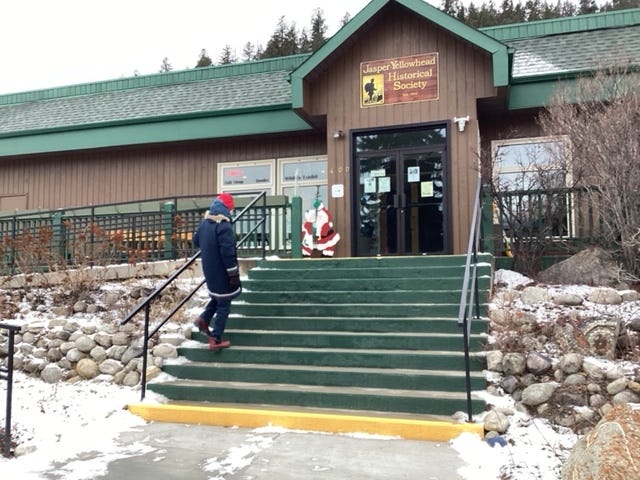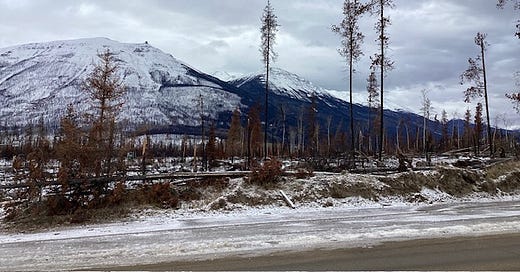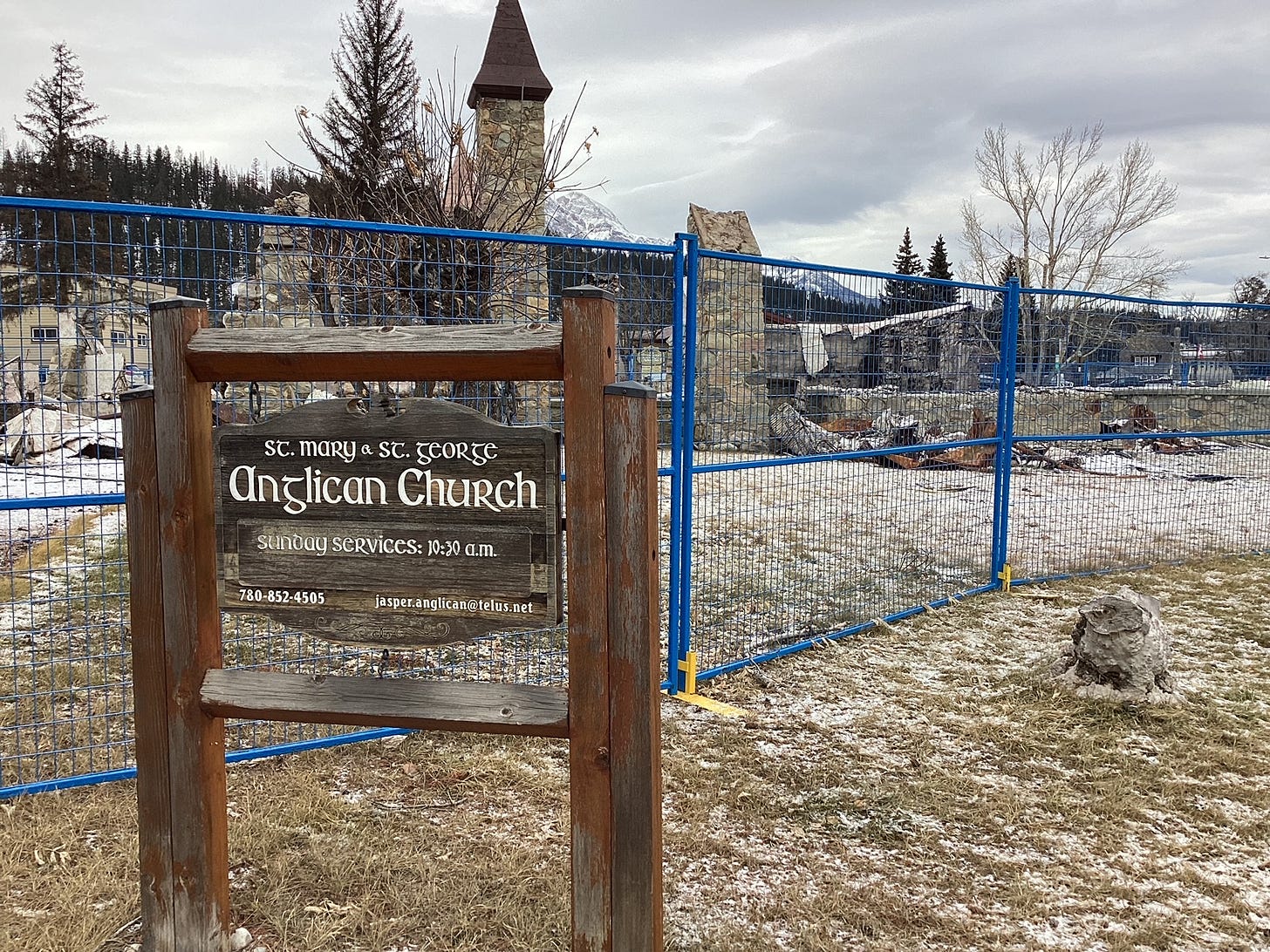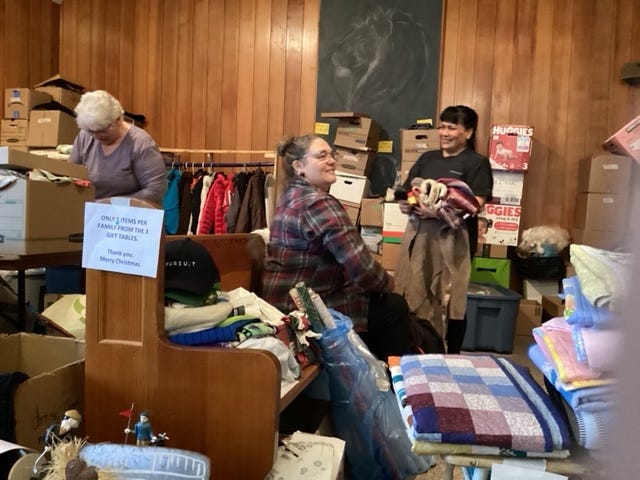Jasper was devastated by fire last summer. We watched on television, the flames reaching 100 metres above the boreal forest of Jasper National Park. More than 20,000 residents and tourists fled. Within a few short days at the end of July 2024, one-third of the townsite’s structures were destroyed. Some 2.4 million hectares of the park burned.
In December, almost five months later, I decided to visit Jasper to support the town’s economy. My conclusion? Go there if you can.
It may seem an uncomfortable suggestion: Why see the burned hillsides, the massive forests that are now endless rows of black stubs? Why view the rubble of nearly 400 structures? Why shed tears at the stone pillars of the St. Mary & St. George Anglican Church, all that remains of a 1928 heritage church?
Go to Jasper to talk to residents and workers. Show solidarity. Stay in the hotels, eat in the restaurants, shop the stores. They appreciate our support. Like Jan, a restaurant worker, they feel our “big hug” and appreciate it deeply
.Many residents that I interviewed, like “Jan,” asked for anonymity in this article. “A lot of people are still picking up the pieces,” she said. “We respect that it wasn’t an okay ending for many.” Tension from differing perspectives, and differing losses, is understandable.
Jan’s family evacuated to Valemount, BC, then to Prince George, Grande Prairie, and Edmonton. Alice, another tourism worker, headed for relatives in Edmonton. After August 16, they were allowed to return. Both were fortunate to find their homes still standing. Both are grateful that there was no loss of life by fire anywhere in the park.
The Jasper Information Centre, run by Parks Canada, is one of the surviving buildings. It was helpful to talk to Peter, an information centre attendant. He took out a free map and highlighted the areas of town that burned. Most of the southeast of the townsite was ravaged. Some stores on the once-busy Patricia Street were in the process of being repaired. Some well-known shops, notably Our Native Land on the same street, were still “closed for the foreseeable future.”
Other areas, he advised, haven’t started rebuilding or repairs. Visitors are encouraged to avoid being “looky-loos.” Instead, visit where it’s obviously okay. Avoid taking photos of burned-out houses.
Another survivor is the Jasper-Yellowhead Museum & Archives at 400 Bonhomme Street. For anyone visiting, this is a must see. Displays feature irreplaceable artifacts and photos going back to the earliest days of settlement. Unique photos of the proud Moberly family, the area’s early Metis fur traders and homesteaders, stood out.

Drop your donation at the door and learn about Jasper’s history. Perspective is everything.
Signs of hope seemed to spring up everywhere. Over Christmas, one house displayed a Nativity scene on a street facing rubble. The famed Christmas lights inside Fairmont Jasper Park Lodge lifted the spirits. Abrar Chowdhury, assistant manager of the Great Hall dining area, stopped by our table to chat. “We feel the love of Albertans,” he said.
One last stop was the free store near the Information Centre. Located in a former Baptist Church, the store gives away donations of everything from pots and pans to winter clothing. First opened in Hinton, AB (about 80 km away) for needy and displaced Jasperites, it was soon moved to Jasper. The smiling faces of the three volunteers who greeted me were uplifting. Although I am not a fire survivor, they gave me a small quilt, one of hundreds of new quilts that arrived from Ontario donors.
After our favorite breakfast of porridge with all the fixings at the historic Athabasca Hotel, reopened in October, we drove back to Edmonton. Reassuringly, animals came out along Highway 16. We saw elk, white-tailed deer, mountain sheep, and mountain goats. Like the people of Jasper, they survived, to show visitors the best that this mountain park and town have to offer.









Another beautifully written and informative article by Constance. Keep them coming.